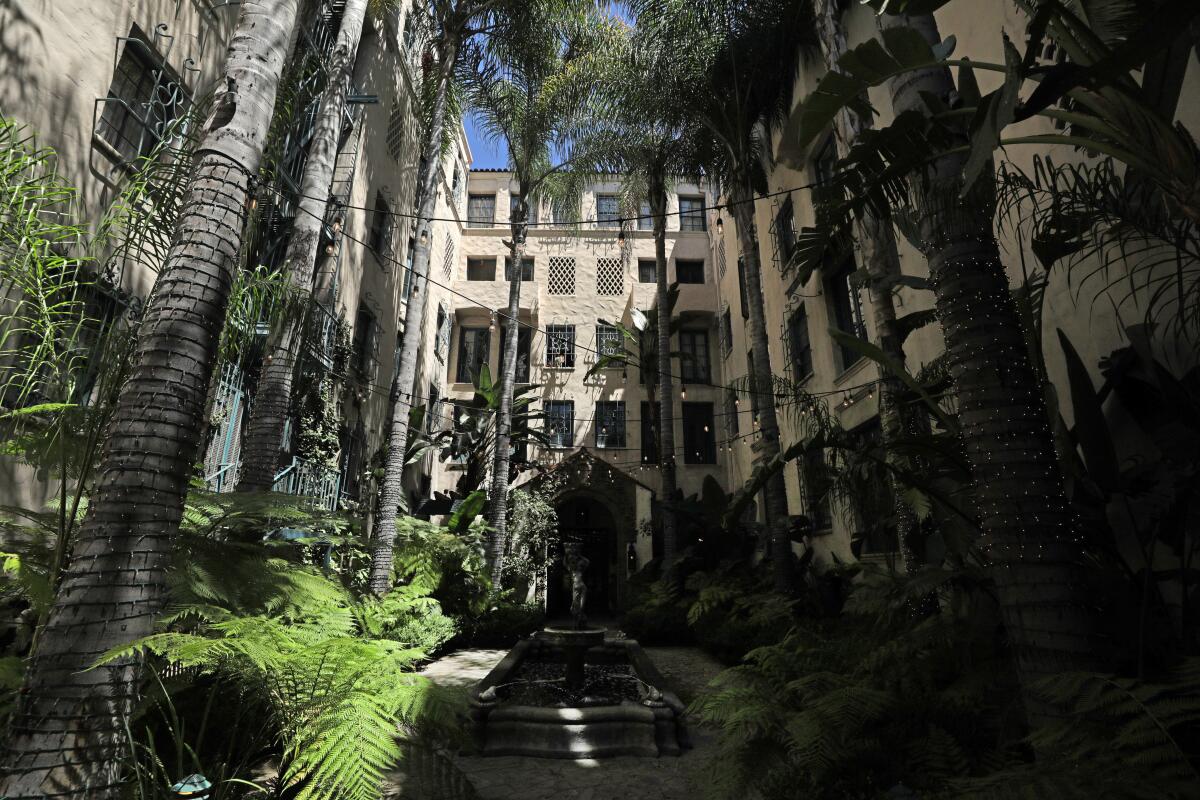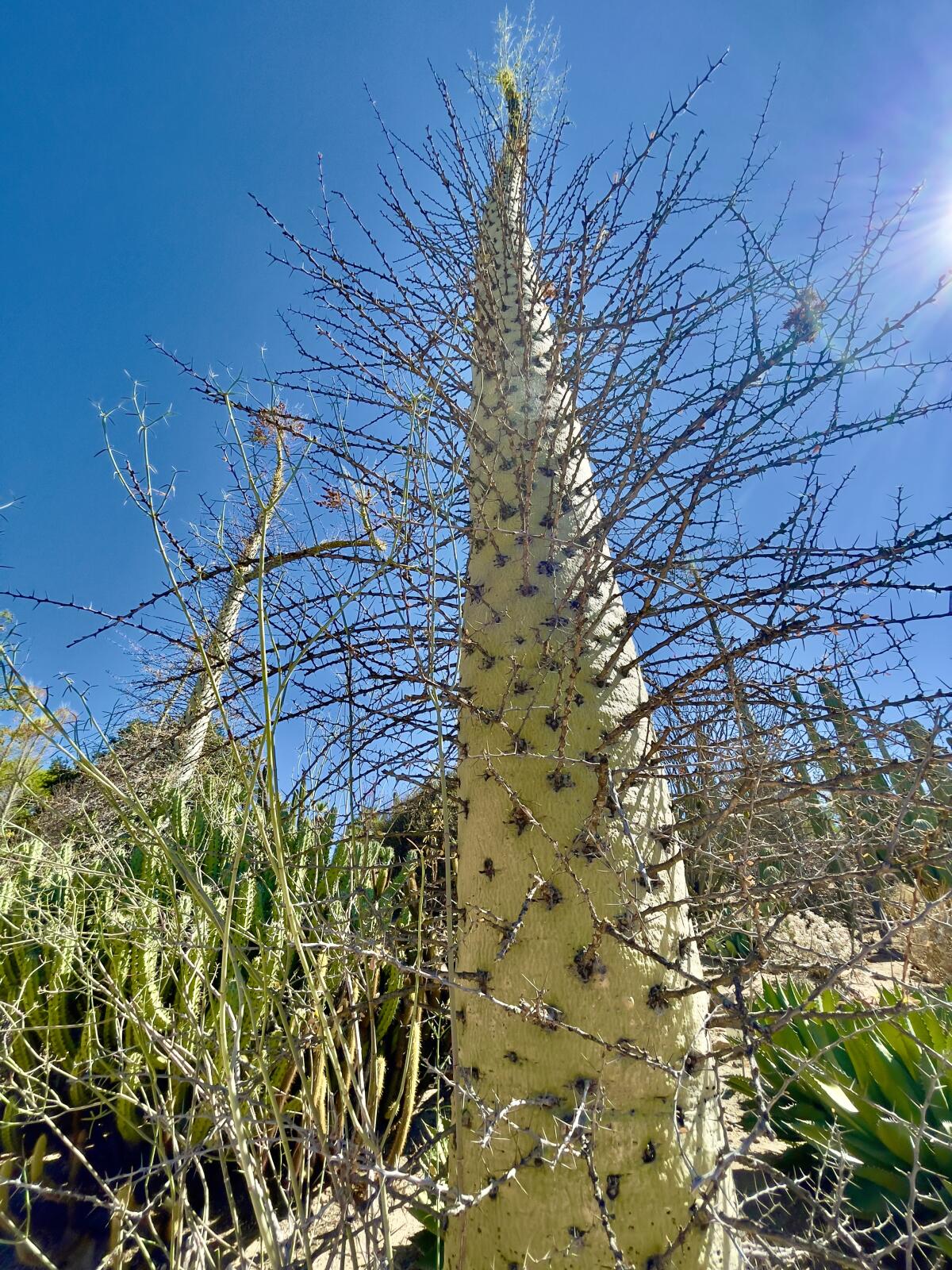L.A.’s past could hold a key to adapting to our extremely hot future

Good morning, and welcome to the Essential California newsletter. It’s Friday, July 28. I’m Helen Li, a reporting fellow joining the Essential California team. You’ll be hearing a lot from me in the coming weeks and months.
This summer has brought brutally hot temperatures to Southern California and many other parts of the country. As climate change brings more extreme temperatures, the future could be even hotter. But it’s worth noting that turning up the air conditioning isn’t the only way to stay cool. For centuries, humans developed ways of managing heat. In fact, strategies from the past could help guide us toward a more heat-tolerant society.
The forgotten history of passive cooling
When I first moved to Los Angeles, I stayed with a friend in a small, renovated Spanish-style home in Alhambra. We found ourselves relatively cool inside white stucco walls that reflected sunlight instead of absorbing it. Indigenous populations in America’s southwest used adobe, a material that keeps cool by storing and releasing heat. Chinese skywall houses allow breezes to travel down to lower stories to replace warmer air. Wind catchers or towers in buildings across Iran and other Islamic countries used hot air rising to pull cool air up.
Welcome to the world of “passive cooling.” Before the advent of air conditioning, keeping cool meant mastering shade, insulation and air movement.
That’s why there is so much courtyard housing in L.A. Built for laborers and families that arrived in the early 1900s, the design allowed air to pass from windows to shared courtyards, easing the heat. Housing built in the ‘70s and ‘80s prioritized privacy and density, and as cities had higher noise levels, residents shut their windows and turned on the A/C.
Now, most apartment units you visit have a “double corridor” design like in hotels. A hallway with apartments on either side prevents air from flowing across the building.
“We’ve gotten rid of basic strategies,” said Frances Anderton, a lecturer at the USC School of Architecture who studies courtyard housing.
Air conditioning’s limited role
A quarter of houses in Los Angeles lack air conditioning. And though the City Council voted to study the cost of installing air conditioning in all rental units and called upon L.A.’s housing department to consider amending building codes and subsidies to offset cooling costs for low-income tenants, heat waves like the one hitting Southern California right now still put people at risk.
For the record:
1:22 p.m. July 28, 2023A previous version of this newsletter incorrectly stated that L.A. City Council voted to mandate air conditioning in rental units. In fact, the city voted to study the cost and feasibility of such a mandate.
Of course, air conditioning mandates will help (so long as the grid holds), but they are only one part of living in a future of extreme heat.
I talked to Ben Stapleton, executive director of the U.S. Green Building Council of Los Angeles, who told me that the city needs to be doing more to educate developers. LEED certification is widely used as a green building rating system for energy efficiency and rewards developers for reducing carbon footprint. There is no direct reward for passive cooling, he said, but reducing air condition reliance at all could help.
To Julie Eizenberg, who has designed affordable housing for years, the message should be simple: “If you design a building, think of air conditioning as a bonus.”
A future of extreme heat
July has been the hottest month on record and possibly for human civilization ever.
In Phoenix, firefighters are scrambling to rescue people collapsing from heat strokes and injecting them with cool saline solutions. Last year, for 10 grueling days, California endured a heat wave in which temperatures spiked to 116 degrees in Sacramento, 114 in Napa, 109 in Long Beach. Heat-related hospital visits have gone up for the last 15 years as climate change has also come to the forefront of our minds.
Poorer neighborhoods bear the brunt of extreme heat, and state data show that Black Californians are more likely than those of any other race to die from heat, and people older than 65 are especially at risk.
Passive cooling can’t solve extreme heat. But it can help.
Growing up, my father always told me 心静自然凉, xīn jìng zì rán liáng — or, a calm heart keeps you cool. So for now, I will just keep slurping a bowl of Korean cold noodles.
And now, here’s what’s happening across California:
Note: Some of the sites we link to may limit the number of stories you can access without subscribing.
L.A. STORIES
In an L.A. suburb, Chinese ‘border crossers’ seek a new life after harrowing journey. Chinese migrants crossing from the Darien Gap have now found a home in Monterey Park. Here are their stories and the responses from the community. Los Angeles Times
Striking hotel workers want Taylor Swift to stay away. Housekeepers, front desk workers, cooks and other hotel employees protested in front of the Hyatt Regency LAX, urging the pop star to postpone her upcoming concerts in solidarity with hospitality employees, who are fighting for higher wages while hotels stand to profit enormously from her visit. Los Angeles Times
POLITICS AND GOVERNMENT
California Gov. Gavin Newsom offers to help negotiate Hollywood strike. The governor has offered to help broker a deal to restart the entertainment industry and keep a major part of California’s economy going. Associated Press
CRIME, COURTS AND POLICING
California is the second state to offer free prison phone calls. Are they aiding rehabilitation? In 2023, California made state prison phone calls free. Families share how these calls have helped them. Los Angeles Times
Support our journalism
HEALTH AND THE ENVIRONMENT
As extreme heat bakes California and the West, Biden unveils a plan to respond. Biden plans to ask federal regulators to step up enforcement of heat-safety measures to better protect construction workers, farmers and other laborers who are exposed to sweltering temperatures. Los Angeles Times
CALIFORNIA CULTURE
L.A.’s concha-shaped heart: Here are some of our favorite places to try. Brian De Los Santos shares his many memories eating concha, the famous pan dulce, and different panaderias to explore. LAist
Anchor Brewing Co. workers gain support from S.F. supervisors to take over business. As Anchors workers scramble to save a beloved San Francisco establishment through a co-op conversion, the San Francisco Board of Supervisors passes a resolution in support. ABC7News
Free online games
Get our free daily crossword puzzle, sudoku, word search and arcade games in our new game center at latimes.com/games.
AND FINALLY
Today’s California landmark is from Stephen Blakesley in La Jolla:

Stephen writes:
Our California Ocotillo desert plants have evolved to live in extreme heat and drought. This Boojum tree is named after Lewis Carroll’s children’s story “The Hunting of the Snark.”
What are California’s essential landmarks? Fill out this form to send us your photos of a special spot in California — natural or human-made. Tell us why it’s interesting and what makes it a symbol of life in the Golden State. Please be sure to include only photos taken directly by you. Your submission could be featured in a future edition of the newsletter.
Please let us know what we can do to make this newsletter more useful to you. Send comments to [email protected].
Sign up for Essential California
The most important California stories and recommendations in your inbox every morning.
You may occasionally receive promotional content from the Los Angeles Times.




